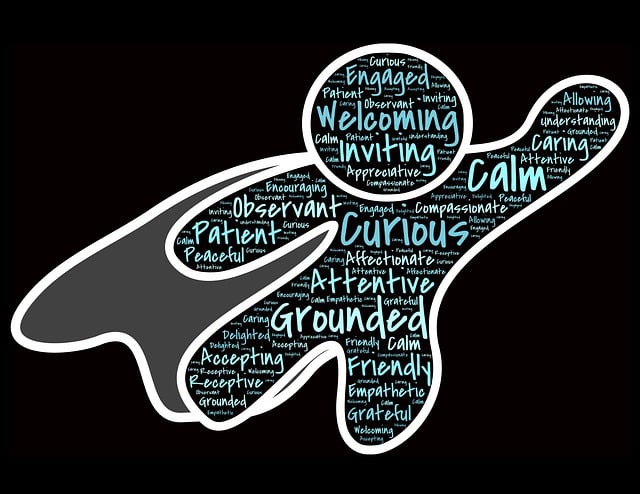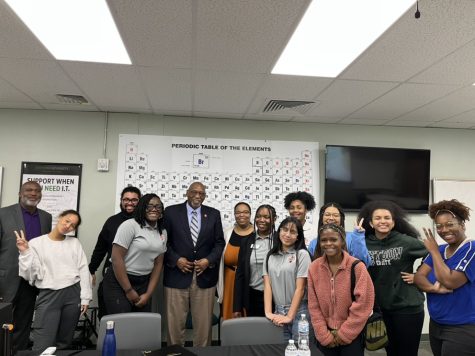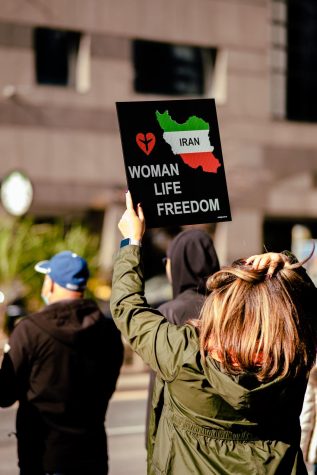Autism Speaks, But For Whom?
April 25, 2018
Every April, millions of people across America participate in the philanthropy event known as Autism Awareness Month. From sharing posts on social media to “lighting it up blue,” people everywhere work tirelessly to make the world aware. Aware of autism, aware of its effects, and aware of how they, the parents and family of people with autism, are affected by it. But there’s one group who seems to be consistently missing from the conversation. Somehow, in all this talk about autism awareness, no one is aware of what people with autism have to say.
Along with Autism Awareness Month comes Autism Speaks, the most recognizable autism charity in the United States. However, although its supporters praise the organization’s “autism awareness” campaigns and grant funding for research efforts, many autistic people believe that their voices are not adequately represented by Autism Speaks, and that the group appears to speak over them rather than speaking for them. From its initial focus on curing people with autism to its systematic exclusion of autistic voices from its own board of directors, Autism Speaks has repeatedly come under fire from the very community it claims to represent.
A Misguided Mission
The primary mission of Autism Speaks, and one which has been consistent throughout the organization’s history, is to raise awareness. This is the driving force behind Autism Awareness Month and their Light It Up Blue campaign. However, the concept of “awareness” has a different connotation based on the context of who is spreading it. When autistic people raise awareness about autism, they are telling the world, “We are here, this is who we are, and this is how you can help us.” But when non-autistic people try to raise awareness, more often the message is something like, “Look at this horrible disease that has affected my family. Look how bad my child has it. Be aware of how awful autism is.” Unfortunately, it is the latter kind of awareness that forms the basis of Autism Speaks and its original mission.
One of the most prominent examples of this misguided “awareness” comes from a video released by Autism Speaks in 2009. Titled “I Am Autism,” the video features an ominous-sounding voiceover speaking as Autism, promising things like “I will make sure that your marriage fails.” Naturally, many autistic people were upset by the implication that their autism – and, by extension, they themselves – are a burden on their family members. Even more concerning is that the claim isn’t even accurate. Divorce rates among parents with an autistic child are no different than those in the general population, despite a decades-old myth that they are much higher. Why did Autism Speaks feel the need to portray autism as a deadly curse on the family, destined to break up marriages and ruin lives?
Fortunately, Autism Speaks has since taken down the video. But it still serves as a reflection of the attitudes their members have shown towards autism and autistic people. For many years, Autism Speaks funded countless studies trying to identify causes of autism and eventually develop a cure. The problem is, most autistic people do not want to be cured. Their autism is a part of who they are, and while it may present challenges in everyday life, it can also have benefits. As one autistic student puts it, “I might have trouble reading people’s emotions, but I can think about things in ways my peers would never imagine. Autism is a part of who I am, and I don’t want to be someone else.” Autism Speaks was started based on the dream of two non-autistic grandparents to never have to deal with their grandson’s autism. Rather than learning about how autistic minds work and adapting to his unique way of thinking and communicating, the founders of Autism Speaks chose to funnel money into finding some drug or shot or surgery that could take away his autism altogether.
New Directions
In 2016, due in part to pressures from the community, Autism Speaks removed all mention of a cure from their mission statement, focusing instead on “promoting solutions…for the needs of individuals with autism and their families through advocacy and support.” According to the Stetson chapter of Alpha Xi Delta, whose national philanthropic partner is Autism Speaks, this change reflects several years of consideration. “We think this mission more clearly reflects what Autism Speaks and sponsoring partners are working for,” said Bria Aqui, the chapter’s Philanthropy VP. “This mission statement is more geared to how the community can respond and support people on the spectrum.”
Autism Speaks’ new mission may sound great on paper, but after so many years of focus on biomedical research and cures, the change was met with some well-deserved skepticism. Many opponents wondered if the organization’s actions would reflect their words. In fact, according to Autism Speaks’s Charity Navigator page, 33.6% of their programming budget is allocated to research, and 66.4% to their hallmark “awareness” campaigns. Nothing at all is mentioned about advocacy and support for individuals with autism. Despite the change in their mission statement, their financial priorities don’t appear to have shifted.
Where is the action to support this new mission? Where is the budget for paraeducators, neuropsychiatric care, or assistive technology in schools that could support autistic children? Where are the programs that actually educate the public about the needs of autistic people, rather than the horrors of living with autism? Why, if a cure for autism is no longer on the agenda, is Autism Speaks still allocating so much funding for biomedical research?
According to an infographic provided by Alpha Xi Delta, Autism Speaks has provided access to risk assessment tools for children and families, expanded an online job portal geared towards individuals on the spectrum, provided access to autism-friendly events, and funded clinical care centers for those with autism. Alpha Xi also reports that their chapter works directly with local autism centers to do things like create sensory toys for children on the spectrum. This is a great start. However, at least according to Autism Speaks’ tax information, these efforts represent only a small percentage of the funding they receive on a yearly basis. Their top earning executive makes over $600,000 annually. If Autism Speaks truly wishes to shift their mission in support of autistic people and their families, programs like those listed above need to make up a much greater portion of their outreach and activism.
Acceptance, Not Awareness
Stetson freshman Abby Hockenberry’s Honors project presents a different approach to working with those on the spectrum. Hockenberry’s interest in the autism community comes directly from her younger sister, who has high-functioning autism. “She’s definitely given me a different perspective on life,” she tells me, beaming with pride. Having a sister with autism has given Hockenberry a greater sense of empathy for others, she says, particularly those who have a different way of looking at the world. However, she recognizes that not everyone has had those experiences. “I think people feel uncomfortable around people with autism because they haven’t really been exposed to it,” she laments. “But I think it’s important for people to realize that they’re just like everyone else, just their outlook on life is different and they see things differently.”
Indeed, many people do feel uncomfortable around people with autism. A 2017 study found that non-autistic adults tend to make hasty judgments about people with autism and are unlikely to want to interact with them as a result. These judgments may be made after only seconds of interaction and without knowing that the person in question has autism at all. Behaviors such as avoiding eye contact, unusual hand gestures or movements, and atypical facial expressions may be strange or off-putting to someone who is not familiar with autism.
Such differences in communication preferences need to be better understood by society as a whole in order to create a more welcoming environment for people with autism. As one Autistic writer points out, the awareness campaigns of Autism Speaks raise plenty of awareness of the limitations of autism, but do very little to actually educate the public about the needs of autistic people and their communication preferences. This “rhetoric of despair” paints autistic people and their family members as helpless victims to a horrible disease, rather than human beings whose minds work in different ways and who are deserving of respect and understanding just like anyone else.
Hockenberry believes that inclusion is the number one priority when working with people with autism, and her outreach reflects this. “We’re aiming to bring these kids to Stetson and just be friends with them,” she explains of her Honors project, the Stetson Autism Coalition. “They’re just people, and [we] should just treat them like everyone else.” Her outreach focuses primarily on helping autistic children see their potential, talents, and value. She hopes to show these children that they can become valuable members of the community, whether by attending college, getting a job, or participating in their own activism. She also hopes to educate the Stetson community about autism by allowing students to work directly with people on the spectrum, creating awareness by facilitating inclusion and collaboration.
Nothing About Us Without Us
When asked what groups like Autism Speaks should be doing to support the autism community, Hockenberry has a clear answer. “We need to work on including people with autism in the community,” she says. Inclusion in the community is an excellent goal, and Autism Speaks has begun to work towards this goal by creating an online job portal for those on the spectrum to find gainful employment. However, in this area, they don’t appear to practice what they preach.
For 10 years, the organization’s board of directors did not have a single member who actually had autism. In 2015, the board introduced three new members, two of whom were on the spectrum. However, many in the autistic community felt that it was too little, too late. The Autistic Self-Advocacy Network, whose slogan is “Nothing about us without us,” posted a statement saying that “Unless and until Autism Speaks makes significant changes to their practices and policies of fighting against the existence of autistic people, these appointments to the board are superficial changes.” Even now, the board has a total of 25 members, meaning that autistic perspectives make up only 8% of Autism Speaks’ decision-making.
Unfortunately, Autism Speak’s long-standing philanthropic partner Alpha Xi Delta appears to be no different. While many sisters have family members with an autism spectrum condition, none of the members of Stetson’s chapter have autism themselves. A spokesperson for the chapter says that they would love to extend a bid to a girl with autism if she felt at home in their chapter, but one has to wonder if any would, given the sorority’s history of ignoring and minimizing the opinions of autistic people. The American University chapter recently denied an autistic girl’s request to speak on their autism awareness panel, instead choosing three panelists with autistic brothers who encouraged support of Autism Speaks. As one opinion writer puts it, this is akin to holding a panel on LGBTQ+ awareness and having only straight, cisgender panelists to speak.
Another chapter at George Mason University called the police on an autistic woman who peacefully protested their Walk Now for Autism Speaks event. She reports that sisters used “baby talk voices” when asking if she needed help, making her feel infantilized and disrespected. One would think that members of an organization dedicated to autism awareness would know better than to speak to an adult woman like a child simply because she has autism. If that’s the sort of treatment Alpha Xi Delta encourages toward autistic adults, it seems unlikely that a student with autism would feel “at home” in their chapter room. And when both Alpha Xi Delta and Autism Speaks itself have such a history of ignoring the voices and opinions of people with autism, one has to wonder who, exactly, the organization is speaking for.
What’s the Alternative?
While Autism Speaks continues to be the leading organization in autism advocacy, there are plenty of other groups out there doing their own work for the autism community. The Autistic Self-Advocacy Network, or ASAN, was founded in 2006 as a direct response to the negative and hateful rhetoric perpetuated by many so-called disability rights groups. Today, they take an active stance against Autism Speaks, believing that their mission is misguided and their campaigns ineffective. ASAN instead chooses to fund projects like scholarships and summer programs to help autistic students succeed in transitioning to college. They support research only when it has a direct benefit for the daily lives of autistic people, such as by developing assistive technology for communication. The vast majority of their Board of Trustees are adults with autism, following their mission of self-advocacy and empowerment for autistic individuals. In short, many of their policies and procedures are exactly the opposite of those used by Autism Speaks.
While considerably smaller in scale, the Autism Women’s Network has a similar mission: provide support by autistic people, for autistic people. They provide a list of recommended healthcare providers who are understanding of and willing to work with autistic adults, particularly women. And that’s a group that is desperately in need of some understanding and support. Autism in girls is vastly under- or misdiagnosed, and the consequences of late or missed diagnosis can be dire. Unfortunately, Autism Speaks has done very little to raise awareness of this aspect of autism. In fact, their use of the color blue as a symbol of autism is based on the (false) idea that the condition only affects boys, much like pink is used as a symbol of breast cancer. But autism does affect girls, and spreading the idea that it doesn’t may have led to thousands of girls missing out on crucial support.
Could Change Be Coming?
Looking at these other organizations and their model of self-advocacy, we can see some possible alternatives to the business model Autism Speaks has relied on for years. If Autism Speaks truly wants to provide advocacy and support for the autistic community, perhaps they would benefit from looking at organizations run by autistic people. Some have argued that because Autism Speaks is such a large and powerful group, it would make more sense to reform their procedures than to have another group take over. If that is the case, Autism Speaks has some big changes to make. The change to their mission statement was a good first step. Hiring more autistic board members, listening to the concerns of people in the community, and providing more funding to projects that actually help people with autism would be better.
Of course, there are others who believe that Autism Speaks is too far gone to change. No amount of new hires or mission statement edits can change the fact that their initial purpose, the reason they were founded, was to eradicate autism entirely. The organization was not founded in support of autism or autistic people – it was founded out of fear, of hatred towards the very concept of autism. Some have gone as far as to say that Autism Speaks is a hate group, advocating for torturing the autism out of children and even eugenics – claims which are not entirely unfounded. The solution, in their eyes, is to stop supporting Autism Speaks and instead give money, time, and resources to groups like ASAN, whose business model more closely resembles the actual goals of the autistic community.
Is Autism Speaks truly beyond all hope? It’s hard to tell. Their current activities are certainly an improvement from the search for a cure, but as long as their decisions continue to be made almost exclusively by people without autism, it doesn’t look like their activism is quite what the community has in mind. This Autism Awareness Month, you might be better off expanding your own awareness by listening to what autistic people themselves have to say. Supporting autistic people does not end with Autism Speaks, and accepting autistic people can only come through understanding – something that Autism Speaks’ form of “awareness” seems to lack.

















